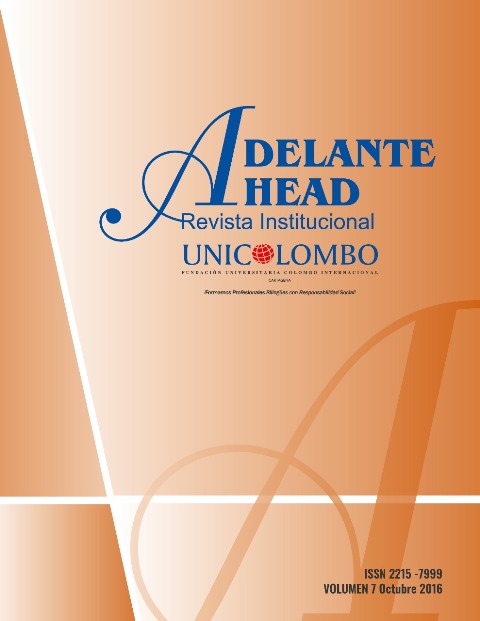Evaluación Ambiental e integración energética de una planta para producción de bioetanol a partir de residuos de arroz
Resumen
Resumen: En este trabajo se presenta una evaluación ambiental y de integración energética de una planta para producción de bioetanol a partir de residuos de arroz. Se simuló el proceso a partir de datos y reportes de condiciones de operación. Se utilizó el software de ingeniería de procesos ASPEN PLUS. Los datos de simulación permitieron realizar análisis pinch para determinar el potencial de integración energética de la planta. Se propuso una red de intercambiadores de calor para la reducción de suministro energético por servicios industriales para calentamiento y enfriamiento. Finalmente, se realizó un análisis ambiental del proceso integrado y el caso base, utilizando la herramienta WAR GUI, para determinar los PEI (potenciales impactos ambientales) del proceso y establecer una comparación entre el caso base y el integrado.
Palabras clave: Bioetanol, ASPEN PLUS, integración energética, análisis ambiental, WAR GUI
Abstract: This paper presents an environmental assessment and energy integration of a plant for
the production of bioethanol from rice residues. The process was simulated from data reports of
operating conditions in the literature. ASPEN PLUS process engineering software was used. The
simulation data allowed to develop pinch analysis to determine the energy integration potential of
the plant. A network of heat exchangers was proposed for the reduction of energy supply by
industrial services for heating and cooling. Finally, an environmental analysis of the integrated
process and the base case were performed using the WAR GUI tool to determine the potential
environmental impacts of the process and to establish a comparison between the integrated and non-integrated case
Keywords: Bioethanol, ASPEN PLUS, energy integration, environmental analysis, WAR GUI.
Citas
Referencia
Álvarez, X. B., Fortes, M. C., & Aguilar, R. A. (2007). Diseño de una red de intercambio de calor utilizando la
metodología supertargeting del punto de pliegue, 7, 2340.
Carvajal, J. C., Gómez, Á., & Cardona, C. A. (2016). Comparison of lignin extraction processes: Economic
and environmental assessment. Bioresource Technology, 214,468476. https://doi.org/10.1016/j.biortech.2016.04.103
El-Halwagi, M. M. (2006). Process Integration (Vol. 7). https://doi.org/10.1016/S1874-5970(06)80001-
El-Halwagi, M. M. (2012). Sustainable Design Through Process Integration: Fundamentals and Applications to
Industrial Pollution Prevention, Resource Conservation, and Profitabilit yEnhancement. https://doi.org/10.1016/B978-1-85617-744-3.00001-1
Hernández, V., Romero-García, J. M., Dávila, J. A., Castro, E.,& Cardona, C. A. (2014). Techno-economic and
environmental assessment of an olive stone based biorefinery. Resources, Conservation and Recycling, 92,
https://doi.org/10.1016/j.resconrec.2014.09.008
Kang, Q., Huybrechts, J., Van Der Bruggen, B., Baeyens, J.,Tan, T., & Dewil, R. (2014). Hydrophilic membranes to replace molecular sieves in dewatering the bioethanol/ water azeotropic mixture. Separation and
Purification Technology,136,14 4149. https://doi.org/10.1016/j.seppur.2014.09.009
Luo, L., van der Voet, E., & Huppes, G. (2010). Biorefining of lignocellulosic feedstock - Technical, economic and
environmental considerations. Bioresource Technology, 101(13),50235032. https://doi.org/10.1016/j. biortech.2009.12.109
Meramo, S. (2015). Diseño Conceptual e Integración energética de una biorrefineria a partir de residuos de maíz. Universidad de Cartagena.
Ruiz-Mercado, G. J., Smith, R. L., & Gonzalez, M. A. (2012). Sustainability Indicators for Chemical Processes: II.
Data Needs. Industrial & Engineering Chemistry Rsearch ,51(5),23292353. https://doi.org/10.1021/ie200755k
Sudiyani, Y., Sembiring, K. C., Hendarsyah, H., & Alawiyah, S. (2010). Alkaline pretreatment and enzymatic
saccharification of oil palm empty fruit bunch fiber for ethanol production. Menara Perkebunan, 78(2), 7074.
Tomei, J., & Helliwell, R. (2014). Food versus fuel? Going beyond biofuels. Land Use Policy, 56, 320326.
https://doi.org/10.1016/j.landusepol.2015.11.015
USDA. (2008). U . S . Biobased Products Market Potential and Projections Through 2025. Energy Policy, 74(February),309324.Retrievedfrom http://www.ncbi.nlm.nih.gov/entrez/query.fcgi?cmd= Retrieve&db=PubMed&dopt=Citation&list_uids=116 94763
Wooley, R., Ruth, M., Sheehan, J., Majdeski, H., & Galvez, A. (1999). Lignocellulosic Biomass to Ethanol Process Design and Economics Utilizing Co-Current Dilute Acid Prehydrolysis and Enzymatic Hydrolysis Current and Futuristic Scenarios Lignocellulosic Biomass to Ethanol Process Design and Economics Utilizing CoCurrentD.Contract,(July),132 .https://doi.org/NREL/TP-510-32438
Wooley, R. J., & Putsche, V. (1996). Development of an ASPEN PLUS Physical Property Database for Biofuels Components. Victoria, (April), 138.




